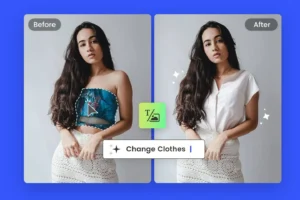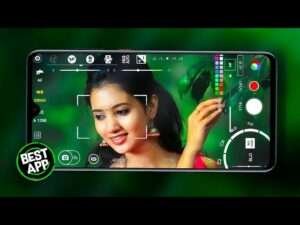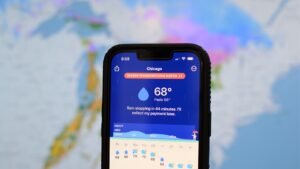Converting a normal gallery into a 3D animated gallery brings a modern and immersive touch to visual presentations. This transformation gives depth to flat images and allows users to interact with visuals in a more dynamic and engaging way. By applying smooth transitions, layered effects, and 3D positioning, the entire gallery becomes more vibrant and attractive. It’s not just about showing images—it’s about creating an experience for the viewer. The animations breathe life into static content, making it more memorable.
A 3D animated gallery uses technology like CSS3, WebGL, or specialized plugins to simulate real-time depth and motion. This enables users to navigate through the gallery with gestures, clicks, or scrolls as if they were walking through a virtual exhibition. The immersive visuals can rotate, zoom, or slide from different angles, adding cinematic quality to every transition. This is ideal for portfolios, showcases, and creative websites looking for a unique touch. The visual storytelling becomes more captivating when combined with smooth 3D animations.
Unlike flat galleries, 3D animated galleries add spatial awareness to each image. Users can move across horizontal and vertical planes, and sometimes even diagonally, to explore content. This layout is especially effective for large collections of images, as it avoids clutter and keeps viewers engaged. A responsive design ensures that this 3D experience adapts to all screen sizes without losing performance or aesthetics. It also enhances user interaction, making browsing intuitive and enjoyable.
Creating a 3D animated gallery can be simple or complex depending on the design goal. Tools like Three.js or Spline help developers bring imagination to life with custom 3D effects. Even platforms like WordPress have plugins that offer basic 3D carousel and animated grid options. These tools allow creators to focus more on design while the backend handles the animation logic. Custom code can add even more control, giving complete freedom over camera angles, motion paths, and depth effects.
The animation in such galleries isn’t limited to just image transitions. It can include glowing hover effects, rotating frames, background depth blur, and light reflections that mimic real-world physics. These visual tricks can leave a lasting impact on viewers and increase the time they spend on the page. Brands and artists use these methods to build stronger emotional connections with their audience. The visuals move smoothly without breaking focus or usability.
3D animated galleries also work well with storytelling. Instead of clicking random images, users can be guided through a journey where each image appears at the right time and position. This flow creates a narrative style experience, making the gallery ideal for documentaries, art portfolios, and interactive timelines. The visual rhythm maintains user curiosity and creates anticipation for the next frame. It transforms the viewer into an active participant in the story.
One of the big advantages of this concept is how it breaks the monotony of traditional flat layouts. Every frame appears like a floating window into another dimension. It becomes more than just a set of pictures—it becomes a digital space that feels alive. Users appreciate the extra effort put into design and animation, making the site or application more memorable. This innovative design also reflects the modern and forward-thinking nature of the brand or artist.
Performance and loading times can be optimized through smart rendering techniques. Lazy loading, asset compression, and efficient animation libraries keep the gallery smooth across all devices. Mobile-friendly design ensures the gallery retains its charm even on smaller screens. Developers must balance between aesthetics and performance to keep the user experience consistent. A well-optimized 3D animated gallery runs fast, looks great, and functions without glitches.
A successful 3D animated gallery also supports multimedia integration. Background music, voiceovers, or ambient effects can be layered to create a multisensory experience. This makes the content feel more real and immersive. It also invites users to stay longer and explore deeper. Combining visuals and audio helps deliver the intended mood, emotion, or message more effectively.
Ultimately, converting a normal gallery into a 3D animated one is about evolution. It’s a step towards next-level user interaction in digital design. As web technologies evolve, 3D elements will become more common, setting new standards for how visual content is presented online. Adopting this approach early helps content creators stand out and leave a strong digital impression. It blends creativity and technology into one fluid visual journey.
3D animated galleries offer a sense of realism that traditional galleries simply can’t match. With careful use of shadows, lighting, and motion, images feel tangible and lifelike. This realism draws viewers deeper into the experience, making them feel like they are exploring a physical space rather than just scrolling through images. These subtle enhancements make each photo or artwork more impactful. Viewers often remember interactive galleries longer than static ones because of the sensory richness involved.
Such galleries can also be customized to match different themes, moods, or brand identities. For example, a dark mode gallery with glowing highlights gives a futuristic look, while a warm-toned 3D gallery with soft transitions feels more artistic and emotional. Customization allows creators to align the gallery's design with the purpose of the content, whether it's an art showcase, product catalog, or memory collection. This flexibility is one of the strongest features of 3D animated presentations.
Another powerful feature is real-time interaction. Users can rotate a 3D object, zoom in on image layers, or even trigger animations through clicks or scrolls. This kind of interaction invites users to explore at their own pace. It’s no longer just viewing—it’s navigating, discovering, and interacting. Every action becomes part of the user’s personal journey, enhancing their connection with the content.
3D animated galleries are also useful in professional environments. Architects, designers, and developers can use them to display project portfolios with spatial context. Viewers can see how designs look from different angles or how elements are arranged in a space. These galleries serve as a virtual showroom, helping clients and audiences understand complex visuals more easily. It becomes a tool for both showcasing and storytelling.
Social media integration can further boost the reach of 3D animated galleries. Sharing snapshots or previews of animated galleries on platforms like Instagram or X (Twitter) can drive traffic and curiosity. Viewers are more likely to visit a gallery that promises a visually stunning and interactive experience. It adds a layer of digital marketing potential to creative work.
In education and museums, 3D animated galleries can replace physical exhibits and offer remote access to valuable visuals. Students and visitors can explore historical artifacts, scientific diagrams, or artistic masterpieces without needing to be on-site. It opens up a world of learning opportunities while keeping the experience fun and engaging. These virtual exhibitions can be updated easily and made available to global audiences.
As technology advances, virtual reality (VR) and augmented reality (AR) can also be added to 3D animated galleries. This allows users to wear VR headsets or use AR-enabled devices to walk through galleries in a fully immersive space. The combination of 3D animation and extended reality makes for the most advanced and engaging experience currently possible. It represents the future of digital galleries.
Whether used for personal, creative, or business purposes, transforming a normal gallery into a 3D animated one reflects innovation and artistic ambition. It shows attention to user experience, detail, and design sensibility. As users become more visually driven and tech-savvy, these enhanced galleries cater to their expectations. A beautiful layout is no longer enough—interaction and immersion are the new standards.
In conclusion, 3D animated galleries redefine how visuals are presented and experienced. They add motion, depth, and interactivity to plain images, turning a simple scroll into a rich visual journey. As more tools and platforms support 3D features, this style of gallery will continue to grow in popularity. Embracing this change not only improves design but also builds stronger connections with the audience.
3D animated galleries also open the door to storytelling through motion, where transitions between images feel like scenes in a movie. Each image can slide in, rotate, or fade with effects that match the mood of the content, turning the whole viewing experience into a visual narrative. These dynamic changes keep the user engaged and make the entire gallery feel alive. This flow helps maintain viewer interest and curiosity as they move through the collection.
Another advantage is how a 3D gallery can guide focus. Through controlled movement and camera angles, creators can direct the user’s attention to specific details in an image or highlight featured works. This is especially useful in portfolios, product showcases, or art galleries where the order and emphasis of viewing matters. Instead of letting users scroll freely, designers can shape the path they follow, making the journey more impactful and emotionally connected.
The smooth flow of a 3D animated gallery also helps build a calming rhythm for users. The movement between frames feels natural and fluid, reducing the mental effort of navigating through large volumes of content. This seamless motion enhances comfort and makes long viewing sessions more enjoyable. It also reflects a higher level of professionalism and quality, which helps build trust and respect from visitors.
For businesses and creators, these galleries can act as powerful branding tools. The unique style and movement can be customized to match brand identity, using consistent colors, fonts, and design elements across the gallery. This gives a cohesive and polished look that strengthens the brand’s image. A well-designed animated gallery can leave a strong first impression and help differentiate from competitors.
From a technical perspective, modern web browsers now support more advanced visual effects, making it easier to implement 3D galleries without heavy code. With HTML5, CSS animations, and lightweight JavaScript libraries, even smaller websites can now feature rich 3D elements. These tools allow smoother animations, better responsiveness, and cross-platform compatibility. This means creators can offer premium visual experiences without sacrificing speed or accessibility.
Maintenance and updates are also easier with modular gallery systems. Developers can simply replace or add new images into the 3D framework without redoing the entire layout. This makes content management quicker and more flexible. Whether it’s a seasonal update, a new product launch, or an artistic refresh, the gallery remains future-ready and adaptable.
3D animated galleries are also great for emotional storytelling. By combining imagery, animation, and audio, creators can stir emotions in their audience. A peaceful landscape can gently float into view, while dramatic portraits can appear with zoom and light effects. This helps deliver emotional messages in a stronger way. People often respond more to visuals that feel alive and emotionally resonant.
On mobile devices, 3D galleries are optimized to respond to touch gestures like swiping, pinching, or tilting. This interactivity enhances user engagement and adds a personal touch to the browsing experience. When users feel in control of the gallery movement, they’re more likely to explore deeper and stay longer. Touch-friendly interfaces make the gallery experience intuitive and enjoyable on smartphones and tablets.
As we move into a more visual internet era, the demand for immersive and interactive design continues to grow. 3D animated galleries meet that demand with elegance and creativity. They provide a digital space where art, photography, design, and content all come together to create a multi-sensory journey. This evolution in design doesn’t just look better—it feels better for the user too.
In every way, the shift from a normal gallery to a 3D animated one represents progress. It shows how digital content can go beyond static displays and become a living, breathing part of the web. Whether you're an artist, brand, educator, or storyteller, this approach allows you to connect with your audience in deeper, more meaningful ways. It's a creative leap that transforms how we present and experience visual content.








